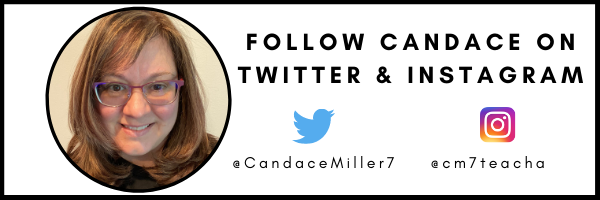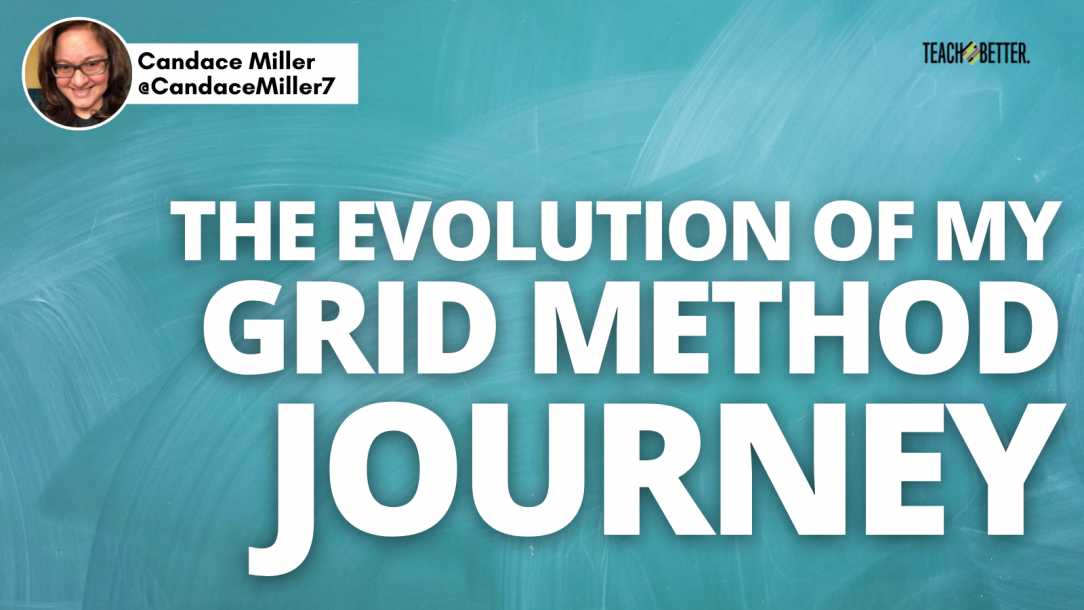TL;DR:
- This post shares the evolution of a teacher’s journey with The Grid Method, from a traditional Grid to the 5E Method Grid.
- The 5 levels of the 5E model are: engaging, exploring, explaining, elaborating, and evaluating.
Purpose
Through sharing the evolution of my Grid Method journey, my hope is to help those who want to use The Grid Method as a content delivery tool, but also want to create an environment where students think like a scientist through inquiry-based learning.
My Reasoning for Using The Grid Method
Let me take a step back to explain why I wanted to incorporate The Grid Method into my classroom.
It was four years ago while I was sitting in my principals office. No, I wasn’t in trouble. She was my evaluator that year. We were discussing areas that I needed to focus on for the next school year. The one main area that she told me I needed to focus on was that of student accountability.
In my classroom, students were given experiences and asked to draw from these experiences to come up with a working model for that content. During this time, students worked in small groups and would whiteboard their findings. They would also place a justification on their boards.
When all groups finished their whiteboards, we would hold a class board meeting. During these meetings, the students would discuss similarities and differences in their findings. They would use scientific arguments to come up with a class consensus on a model for the experience we just worked through.
During my conversation with my principal, we both agreed that modeling is an awesome approach to inquiry-based learning. But, not all students were getting involved. It seemed that the same student voices were heard and that some were just sitting back and letting those students have a voice.
Yes, I could have tried different approaches to accomplish the goal of holding each student accountable. But my department head introduced me to a method called The Grid Method. She heard about it through another department head in our district.
I was intrigued! I loved that The Grid Method would allow me to incorporate more than student accountability into my classes. A student-paced, student-driven and mastery-based approach!! How awesome is that?!
Click HERE for more information on the Grid Method!
The Beginning of My Grid Method Journey
Over the next few months, I dove into finding all that I could find on The Grid Method. I was thinking of making the change to Grids during the next school year. BUT, my student teacher, who was with me from the beginning of the school year until October, came back in January and was so excited to share out a new method that she learned from her short assignment teacher.
IT WAS THE GRID METHOD!!
We decided together that we would try two Grids when we came back from spring break.
I was a little nervous trying something new with a student teacher and at the end of a school year. But, I am so happy I decided to take the dive into mastery learning.
My students LOVED The Grid Method. They loved the freedom of a self-paced environment. They were excited about the fact that they could retake proof of mastery and Grid assessments. AND their grades were improving.
My students LOVED The Grid Method. They loved the freedom of a self-paced environment. They were excited about the fact that they could retake proof of mastery and Grid assessments. Click To TweetMy student teacher and I loved several aspects of using Grids. We loved being able to meet each student where they were at and tailor their education to meet their needs. We could easily give differentiation in instruction by assigning different readings, different levels of questions, or giving students a choice on how they wanted to learn the content.
The fact that we could sit with small groups and work through content made reaching each student a lot easier. We also loved the fact that we knew each student was learning the content and not depending on another student to get the work done for them. Which was the main goal that my principal and I talked about for the next school year.
Here’s a link to the first Grid. Please note, I did not include levels four and five. My student teacher and I felt that due to many different factors, we could stop at level three. (Click HERE)
Giving Choices in Grids
Over the summer, I decided to revamp the way I originally used Grids. I wanted to incorporate student choices in different learning opportunities. Another aspect I changed was to make my Grids start at the top with level one. This was done due to suggestions from my students during the previous school year. Here is a link to one of my Grids from that school year. (Click HERE)
The choices worked out well. My students loved that they could choose how they would learn the content. I also used a student tracker that I projected for the class to see. Students were able to see if other students were on the same part of the Grid and freely move around to work with others as needed. They could also use the tracker to get help from students who have finished a learning opportunity they were stuck on.
But for me, something was missing.
I missed starting with a mystery and growing knowledge based on our experiences. I had to come up with a way to utilize experiences first in a Grid instead after covering the content. The 5E Model works perfectly.
Creating a Grid Using the “5E Model”
For those of you that don’t know what the “5E Model” is, it’s a method that walks the student through different phases of learning. It starts with engaging the student with the content. Think of the phase where you pique interest and gauge the background knowledge of students.
The next phase has the student exploring different aspects of the content. It is within these first two phases that I plan to place the inquiry part of my Grids.
We then move on to the explanation part of the Grid. This would normally be the first level of a traditional Grid. This is where I will be bringing what we’ve observed from our experiences in the first two levels and make what I call a “working class model.”
After this, the Grid will move onto the elaboration phase. Students will connect the content to real-world scenarios. The last phase is evaluation.
Below is an outline of what I plan on doing in each level. (This is what I’m working on this summer to be used during the 2021-22 school year.)
Level 1: ENGAGE: An activity that captures the students’ interest and allows me to gauge the background knowledge of my students.
Level 2: EXPLORE: A lab or experience where students work with the material. The proof of mastery will focus on the parts of scientific argument or experimental design.
Level 3: EXPLAIN: Traditional Grid level 1 or level 2 activities. Proof of mastery will focus on knowledge of content presented in this level.
Level 4: ELABORATE: Connecting content to real-world scenarios. Proof of mastery will focus on knowledge of content presented in this level. This is also where the full Grid assessment will take place.
Level 5: EDUCATE others: I wanted to change this up from “evaluate” since I’m doing different types of assessment throughout the Grid. So this is where the traditional Grids “Individual Research” would take place. Students will create and develop their own project that demonstrates mastery of the content presented in the GRID.
Click HERE for an example of a Grid that is in 5E Model format.
[scroll down to keep reading]Final Thoughts
Over the last four years, I love how The Grid Method has worked for me and my students! I’m excited about the new changes for next school year with incorporating the 5E Model.
About Candace Miller
Candace Miller is an educator who believes that each student is capable of learning. She understands that connecting with students is key. Her passion is helping students with basic needs. Candace orchestrated the set up of a care corner in her school where students can go and shop for free items that they need. Her other passions include her family, camping, being in nature, reading and crafting (mainly using her cricut machine).
Candace started her education career in Lansing, Michigan. She took ten years away from education to be a stay at home mom for her son. Candace is currently teaching high school science in the Columbus area of Ohio where she is part of her school’s teacher leadership program. She previously taught ESL science in a sheltered science class. Candace is honored to be a founding ambassador for the Teach Better Family and is excited to collaborate with others in the Teach Better Family to be a better teacher.




